#the concept for this game was so raw but the execution was poor
Explore tagged Tumblr posts
Text
you know what ? now that i'm analysing the cryptic castle mission, as well as the missions preceding and succeeding this particular route, it further causes confusion as to WHY THE HELL IS BLACK DOOM/DOOM'S EYE NOT PRESENT IN CRYPTIC CASTLE
he's there for both digital circuit AND glyphic canyon prior, and the three levels after it, regardless of what path you take. so why is he absent ?? the black arms are there storming the doctor's castle for who knows what and black doom coincidentally decided not to show ?? idk man, i just think it's fucking weird
#bee blabs#ergo in my piece shadow now has almost full reign to do whatever the hell he likes#aka be nonsensically kind and help amy#but dude fr#trying to fix a plot broke on launch is so baffling to me#i am STILL trying to fill plot holes here#i am having a lot of fun being nitpicky tho#considering i never rly thought this hard abt shth05's shoddy plot til now#ofc it initially makes no sense but the more u go down the rabbit hole ??#it makes less and less sense#by no means is this me bashing on shadow 05 despite the general consensus that this game is a shambles#i just like to find flaws in media and i like it more when there's an opportunity for me to fix them#the concept for this game was so raw but the execution was poor </3#but this might just be the biggest fix-it fic ever
3 notes
·
View notes
Note
Ff14 for 3 and 5, and zenos with 6 and 8
fandom ask meme!! ask me.... memes >:3
thamk u ilu....
3. which scene I would like to erase from the universe and why.
it technically was erased from the universe via retcon but every time someone mentions to me about the original moenbryda minion desc. that implied urianger was creepy towards her it makes me want to bite the writer again. also yknow what?? the lancer quest where foulques dies. my boy deserves to live so many other random ass shitty npcs get to live. like ok foulques was a dick but like he was a dick because every he knows decided to be racist at him and he HAD a POINT. like maybe some people deserved a stabbing. and yet 'known canon rapist npc ungust' gets to live? im sure theres 800 other things ill think of later bc its not as if the game is free of weird narrative choices, but ill be real. most of the time theres something where im like "this shouldnt Exist" i just vaporize and rewrite it in my mind LMAO. hear me out about werlyt
5. the scene from it that lives in my head rent free.
everything urianger has ever said in his entire life and also 90% of shadowbringers. its really good. for no particular character reason i think a whole lot about when you and the scions go to storm eulmore and u walk in on vauthry and ryne immediately screams 'no, make him stop' bc hes eating a pile of meol and i know. i know. in my heart. that if it wasnt gonna be too heavy gore and a bunch of graphics, the story intended that to be read as him ripping into and eating that lion sin eater that always sat in that exact spot. i know in my heart they ran in on him mid transformation eating a lion raw with his hands. i know this. shadowbringers is normal and fine for everyone involved.
also yknow in endwalker after [6.0 SPOILERS BEGIN] meteion reveals thancred is dead, urianger speaks and she immediately turns to him and goes 'youre full of loathing and dont even know why you still exist here'. that fucks me up every day. do you know how much has to happen for urianger, whose entire motivations this entire time is that he loves people so so much, to Actively Loathe you. to Hate a scared child. and he hates her because she killed thancred. and he doesnt know why its never him who gets to be the one sacrificed. im fine thats fine [END 6.0 SPOILERS]
6. the scene that I think shows just how awesome they really are.
The final fight with him here he speaks to the wol "not as a hero, but as an adventurer", and asks if your journey was a blessing or a curse. I like zenos because he is very much an exact foil for Laurel and that scene just shows that. hes aware of how close they are, and he cares.. he wants to know if someone 'like him', as the wol is, ever actually had a chance to live a life that could be enjoyable. he's trying to connect this entire time the only way he can understand you... i get if people dislike zenos. tbh im like, zenos agnostic outside of the context of him and the wol LOL but. i think at the end hes able to show that he really truly did connect with the wol. he managed to make a bond and some kind of understanding.
at least, with a wol like laurel.... with my other WoLs its like "YOU DONT GET SHIT GO AWAY!!!!!!" poor zenos. anyways him calling you an adventurer instead of a hero at the very end is neat. he cares about you he wants to understand very badly. he loves laurel hes her princess ok in this zenoswol laurel essay i will,
8. a headcanon I have about this character.
theres so much horny zenos fanart and i respect this i understand where it comes from but im also like. this man does not practically know what sex is and cannot flirt. he has only the hunt. if he fucks he does it almost by accident and it started as a fistfight or he has to be instructed into it. he has never seen pussy before. the wols gotta give him a diagram bc he understands concept but not execution. hes got other priorities.
also in In From The Cold when he possesses the wol the actual first thing he does is fall flat on his face because the center of gravity is way too different and hes not used to walking. and laurel specifically is lightly digitigrade and trekking around the snow in stiletto heels zenos gets into her body stand dramatically and then immediately eats shit because what the fuck how are you standing up like this.
1 note
·
View note
Text
Video Game Review: Assassin’s Creed 3 (Ubisoft, 2012; Remastered 2019)
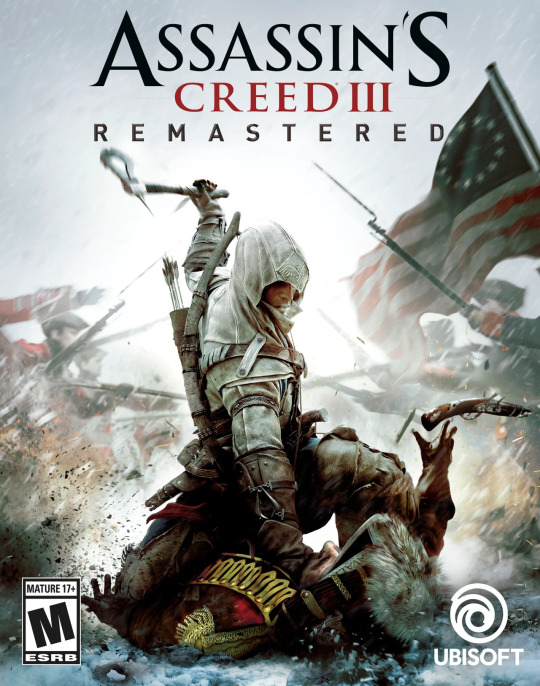
Genres: action-adventure, third person, open world
Premise: Desmond Miles and his team use the Apple of Eden to locate the Grand Temple of the First Civilization. To open it, Desmond must locate a key, known to his ancestors Haytham Kenway and Ratonhnhaké:ton (also called Connor) who were active during the American Revolution.
Platform Played On: PC (Windows)
Rating: 3.5/5 stars
***Full review under the cut.***
I am evaluating this game based on four key aspects: story, characters, gameplay, and visuals. I will be evaluating the remastered version of this game on its own terms, so I cannot speak to how it is different from the initial release.
Content Warnings: violence, blood, colonialism, racism, domestic violence
Story: Assassin’s Creed 3 initially follows Haytham Kenway, a new PC character and ancestor of Desmond Miles, as he journeys from Britain to America during the 18th century. Haytham is attempting to find the Grand Temple, a chamber once belonging to the ancient First Civilization, with the help of several colonists and a Mohawk woman named Kaniehti:io. Unable to open the Temple, Haytham initiates a romantic relationship with Kaniehti:io, resulting in a son (Ratonhnhaké:ton/Connor). It is revealed that Haytham is a Templar when he initiates one of the colonists, Charles Lee, into the order.
Years later, Ratonhnhaké:ton is now the PC character. His village is burned by Lee and his cronies, resulting in the death of his mother. The clan leader gives Ratonhnhaké:ton a sphere which contains a message from Juno. Juno leads Ratonhnhaké:ton to Achilles Davenport, a retired assassin who agrees to train him and renames him “Connor.”
The rest of the game focuses on Connor’s evolution as an assassin, his plan to seek revenge against Lee, and his angst regarding his parentage. I very much enjoyed the moral conflict in Connor’s storyline; Connor is resentful of his father’s involvement with the Templars, but also desires to find common ground with him once he hears of Haytham’s goals. I also really liked the Haytham plot twist, as it took me by surprise and prompted a lot of emotional investment in the family drama.
However, the sheer amount of things to do in the open world distracted from the plot and at times threw the pacing off. I also did not like some of the tropes that this game utilized to tell a story involving indigenous characters. Connor’s mother, Kaniehti:io, was a competent warrior and formidable personality, but was primarily present to have a white man’s child and then be killed for emotional shock value. I also don’t think this game pushed hard enough against colonialism, making the Americans out to be morally right despite their supposed “flaws” and showcasing some violence against indigenous people for shock value. However, I appreciated that this game featured many indigenous actors and put a lot of dialogue in indigenous languages.
Desmond’s story was much improved from Revelations. He’s back to working with his team, which made for fun character interactions, and his father also joins the mix, which nicely parallels the tumultuous Haytham/Connor relationship. The stakes are also much higher than in previous games regarding the First Civilization - whereas the team was previously looking for artifacts in the Ezio games, this game features the exploration of an actual Temple housing more information.
I also played the DLC, “The Tyranny of King Washington,” which follows an alternate timeline in which Washington has been corrupted by the Apple. Washington has declared himself King and rules America with ruthless tyranny. To take him down and combat the power of the Apple, Connor must channel supernatural powers derived from animal spirits. While the premise was incredibly interesting to me, the execution was rather poor, especially in terms of indigenous representation. Kaniehti:io was resurrected only to be killed again, and the story featured a lot of scenes of indigenous suffering, including slavery and violence. I also don’t think the “spirit animal” powers were portrayed in a way that was respectful of the actual religious/spiritual significance of spirit animals in Native cultures. I’m somewhat ignorant, though, so I would prioritize criticism from indigenous gamers rather than mine - see what they have to say about the base game and the DLC.
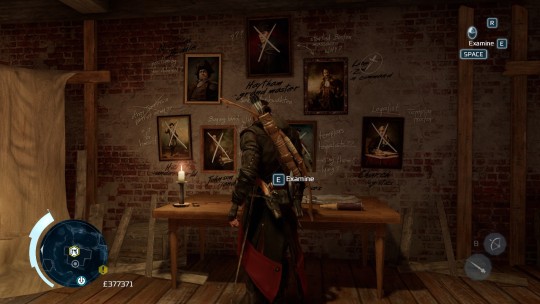
Characters: Haytham Kenway, the first PC character, is initially pretty likable in that he’s witty and charismatic. I like that he was sarcastic and seemingly well-polished, holding in his emotions like only a posh British character can. He was also shown to be brutal at the drop of a hat, and his feelings tended to get the better of him when it came to certain topics, both of which kept me on my toes. The fact that he is the first PC character creates a lot of sympathy for him, mirroring Connor’s later emotional turmoil when he’s being pressured to kill his father despite desiring an alliance.
Connor is a lot more stiff and broody, which is understandable due to the trauma in his past. While he isn’t very charismatic, I did like him as a character, since he was willing to call out the hypocrisy of everyone around him. I particularly enjoyed the way he highlighted how the Americans were all about freedom for the select (white) few - no one, not even Washington, escapes criticism, and it was refreshing to see a non-idealized portrait of the Founding Fathers through Connor’s eyes. Connor did have his sweeter moments, especially when interacting with the people living on his homestead, and I loved when he found joy in the family he made. I do wish he had been given more joy throughout the game - he so rarely expresses positive emotions that he seems like a stick in the mud.
Side characters, such as the Founding Fathers, were well-realized in that they weren’t portrayed as heroes. Washington is shown to be unable to deal with problems in any way other than by violence, and Adams is called out for his insistence that white colonists need to be free before enslaved Africans can be freed. NPCs living on the homestead are also given unique conflicts and storylines that made them feel real, and being able to converse with them at any point in the game was a fun way to feel connected to them.
Desmond is back to being his pre-Revelations self, balancing charisma and determination in a way that makes him compelling. Nothing is necessarily new regarding his characterization, so he acts more like a staple that links the Ezio games to the Haytham/Connor story, making them feel part of the same continuity.
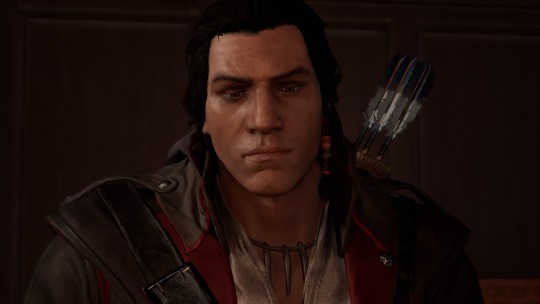
Gameplay: I really enjoyed the way much of the gameplay from the previous Assassin’s Creed games is updated and reimagined for an 18th century setting. Parkour/free running is simplified, and target lock has been eliminated for a more fluid combat experience. Players also no longer need to use medicine to heal, as health regenerates automatically with time. Players can also use more of the environment to assist with stealth; haystacks and wells make a reappearance, as well as groups of people for blending, but Connor can also hide in tall grass, bushes, and behind corners. I also liked that Connor could whistle to lure enemies towards a hiding spot before taking them out.
In terms of weapons, Connor has access to some staples, such as the hidden blade, sword, bow, pistol, etc. but also has some interesting options, such as the tomahawk and rope dart. All of these options were simple to use and required very little practice to get right, though combat itself felt significantly more difficult than in previous games. Several enemies are difficult to take down, such as the Scotsmen wielding giant axes, but players who like a challenge might enjoy the increase in difficulty.
Connor can also recruit new assassins and level up their abilities, similar to Ezio’s actions in Brotherhood. The recruits are able to be used in a number of new ways, not just in a fight, which makes them fun to play around with.
Connor is also able to control his notoriety in much the same way that Ezio could, though instead of “heralds,” there are “town criers” and instead of assassinating a corrupt official, Connor can bribe a printer to create counter-propaganda. Pretty clever, if you ask me.
Collectibles such as Benjamin Franklin’s almanac pages, feathers, and treasure chests are also available and pretty standard - you collect them, you get rewards. Connor can also participate in side quests and challenges, such as a fight club and assassination contracts. To move around the large map, Connor can use fast travel, though to be honest, the map was so big that exploring it all could get tedious.
Also returning is the concept of full synchronization, which was a pain. Like the Ezio games, conditions for full sync did add some challenge to the game, but it was incredibly annoying to do a mission over and over again in order to reach 100%. I’d much rather have a single goal and go about it my own way without the impression of being penalized (even if that penalty doesn’t affect the gaming experience overall).
In terms of the economy, Connor is tasked with managing a homestead. Instead of improving the property or buying monuments, Connor recruits tradesmen such as loggers, miners, and farmers, as well as artisans such as tailors, innkeepers, and blacksmiths. The former group produces raw materials which can be turned into crafted goods by the latter, which Connor then puts on a caravan to be sold in town. Profits enable Connor to buy more weapons and consumables, and tradesmen/craftmen can be leveled up to produce more profitable goods through “homestead missions” which advance NPC stories.
Hunting is also introduced as a way for Connor to gain resources (such as pelts and meat), which are then used for crafting or for sale at trading posts. To hunt, Connor can use a range of tricks, including reading the environment for clues, planting snares, and using bait to lure skittish animals. I liked that hunting was always an option, but never required, since actually finding certain animals could be a chore. Connor also has the option of playing games such as Nine Men’s Morris to earn money through gambling at taverns, though I personally never opted for that. I did think the idea was clever, as it was a neat way to include micro-games in the larger structure.
By far, the most interesting new addition was naval combat. Connor can upgrade his ship, the Aquila, and go on a number of naval missions which earn him rewards. It took some getting used to, and often, the combat could be cumbersome, but I actually enjoyed myself quite a bit. These missions were never overly long, and some of them had interesting world building details.
The DLC has a lot of the same gameplay mechanisms, with the added bonus of “spirit animal powers” (see my assessment above). Basically, these are supernatural abilities that allow Connor to briefly turn invisible (wolf), fly short distances (eagle), and take down multiple enemies or smash through structures with great strength (bear). These abilities were somewhat insensitive thematically, but fun to use in terms of gameplay; I liked being able to sneak past enemies without needing to dart between bushes, and I loved flying across rooftops rather than jumping and climbing them. However, these powers also made exploring the map somewhat irrelevant - treasure chests primarily included consumables, such as arrows and rope darts, so if players find themselves preferring combat using a blade and animal power, there’s not much incentive to clear the map of points of interest. Nor is there much incentive to do side quests or challenges, as their rewards don’t add much to the gaming experience unless you use a lot of consumables.
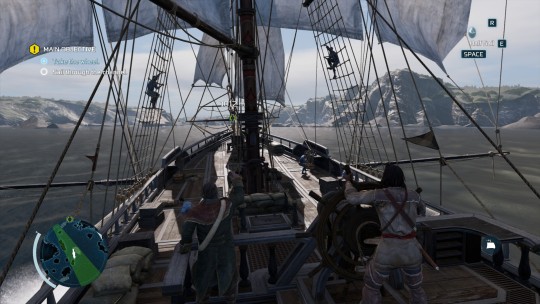
Visuals: Assassin’s Creed 3 is a beautifully rendered game. The environments are stunning, whether they are seascapes or the wilderness on the “Frontier.” I also think the cities were well-done and eye-catching; even though buildings and streets were somewhat monotone (earthy tones), they never felt dull and little details made the design pop (things like posters/broadsides or splashes of color here and there).
Connor’s assassin outfit is also appealing in that it mashes up some 18th century fashion with accessories that denote his indigenous heritage. The red and white color palette from the Ezio games is replaced by a blue and white scheme, perhaps to show that Connor is not aligned with the British Redcoats, but even so, it still felt like an assassin uniform. I also liked the designs of Haytham’s cape, coat, and tricorne, as well as Achilles’ nod to his past through his accessories.
Animations were very fluid, and Connor’s combat maneuvers were interesting and varied. I think they were much more aesthetically pleasing than Ezio’s, and I liked how the body movements (tumbling, spinning) made them feel physical. There were some moments when awkward camera angles would obscure my vision, which cost me some kills or opportunities here and there, and there were occasionally some glitchy graphics, but they didn’t pull me out of the game the way Revelations did.
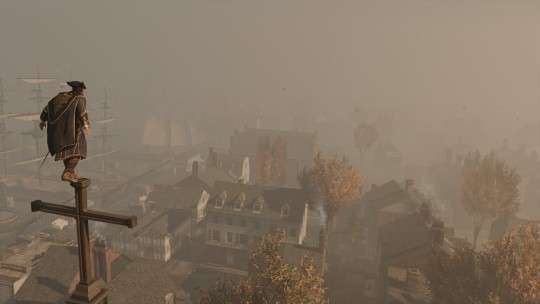
Final Verdict: Despite the plot being weakened by pacing problems and some questionable Indigenous representation, Assassin’s Creed 3 is beautifully rendered and improves on the franchise’s formulae by reimagining the Assassin-Templar conflict in a new setting.
2 notes
·
View notes
Text
Stocks hate inflation – here's why
http://bit.ly/2CePgoJ
Inflation may be a bull market's greatest enemy. AP Photo/Richard Drew
Stock markets have been on a wild ride recently, plunging one day and then soaring the next. Since its peak in late January, the Standard & Poor’s 500 index has declined more than 10 percent, signaling a market “correction” beyond just a temporary blip.
Pundits have offered many reasons for the biggest stock market swoon in two years. One of the most frequently blamed culprits is inflation, which loosely means an increase in consumer prices over time.
What would prompt something so seemingly banal to send investors into a state of craziness and even panic? A closer look at inflation – a topic I’ve studied closely – and how it affects markets offers some answers. It also hints that an economic slowdown is closer than you may think.
What is inflation?
Inflation is defined as the rate of change in the prices of everything from a bar of Ivory soap to the costs of an eye exam.
Better, worse, same? It’s all in the CPI. Mega Pixel/Shutterstock.com
In the U.S., we measure inflation using something called the consumer price index. Simply put, the CPI is the average price of a basket of goods and services that households typically purchase. It’s used throughout the economy, for example to set pay raises or to adjust benefits for retirees.
The CPI increased about 2.1 percent in December from a year earlier, meaning the price of most goods and services rose by about that amount on average during the period. Some, such as hospital services, climbed at a faster pace than the average (5.1 percent), while other categories rose more slowly or even declined, such as airline fares, which fell 4 percent.
Although inflation is pretty low today, this hasn’t always been the case. In 1979, inflation exceeded 11 percent, a trend that persisted into the early 1980s.
Some observers are now worried it’s about to start accelerating again.
The present value of money
So what spooks stock investors about inflation? To answer that, let’s examine the two ways inflation directly affects stock prices. The first concerns how we value future income.
When you purchase a stock, say for example in Walmart or IBM, you are actually buying a long stream of future cash flows based on the profits of the company. The value of the company (and its stock price) is based on how much these future cash flows are worth today, a finance concept called “present value.” The present value of any sum of money expected to be collected in the future is computed by factoring in the impact of interest rates and inflation.
For example, let’s say you win the lottery and you’re offered either US$10,000 in a year’s time or $9,600 right now. What should you do? Well, if you’re acting rationally and you don’t have any urgent debts that need paying off, you would try to determine what that $10,000 is currently worth. To do so, you would divide it by 1 plus the interest rate you could readily get at a bank, let’s say 3 percent (we’re assuming that there is no inflation). So the present value of $10,000 a year from now would be $9,709 – which means it’s best to be patient and wait, rather than take the money now.
Now let’s imagine the same scenario but with inflation, which is expected to be 2 percent during the period. Inflation causes the bank rate to be 5 percent, and as a result that ten grand is actually worth only $9,524 today. In which case, take the $9,600.
Because inflation made the “discount rate” higher, the value today of the future $10,000 was reduced. The same thing happens to stocks. Since a stock’s price is just the risk-adjusted present value of the company’s future cash flows, a rise in inflation will cause it to drop as well.
When investors buy Walmart stock, they’re really buying the expectation that all these customers will keep coming back and generating cash flows in the future for the company. AP Images for Walmart/Gunnar Rathbun
Inflation’s flip side
A second way inflation directly affects stocks has the opposite effect. That is, it should cause them to increase in value.
Rising prices means companies are able to make more money from every computer game, sofa or pastry they sell. A baker, for example, who sold bread for $5 a loaf, increases the price to $5.50 because of strong demand. While the cost of the flour and yeast may have also climbed at the same pace, the baker still makes more money because profit goes up too.
That leads to higher future cash flows and thus a higher present value today. These two effects of inflation should in theory cancel each other out. And yet stock prices are usually hammered when inflation rises. So what’s going on?
There’s lot of evidence, including my own research, that many investors suffer from something called “inflation illusion.” They worry about the present value effect of inflation of stocks but they ignore the growth in cash flows and profits that result from higher inflation. This results in stock prices falling when they shouldn’t.
Stock markets have been a sea of red lately. AP Photo/Sadiq Asyraf
Slowdown on the horizon
However, there’s a third, indirect way inflation affects stocks. And this might be what is causing the concerns in the markets today. This effect has inflation playing the role of a canary in a coal mine, warning that bad times are coming.
To understand this, we have to consider how inflation varies through the business cycle, which is a way of measuring the growth of the economy from the beginning of an expansion to the end of a recession.
At the beginning of a cycle, inflation is often low. (It was practically nonexistent or even negative following the financial crisis of 2008.) But as the economy heats up and people have more money to spend (as is the case now), companies begin to sell more goods and services at steadily increasing prices, earning higher profits, while most people are able to find work.
As more stuff is being created and sold in the economy, the demand for raw materials and workers increases. Besides pushing up prices, this can also result in higher wages. The fastest increase in take-home pay in nine years was another “warning sign” that spooked investors recently.
This is where we are now. If left unchecked, inflation could spike, which would likely cause the economy to slow down quickly and unemployment to increase. The combination of rising inflation and unemployment is called “stagflation,” and is feared by economists, central bankers and pretty much everyone else. It’s what can cause an economic boom to suddenly turn to bust, as we saw in the late 1970s.
This is where the Federal Reserve steps in. The U.S. central bank has the ability, through various tools, to manipulate short-term interest rates. So before the economic party gets out of hand and stagflation takes hold, the Fed steps in to calm things down by increasing the cost of borrowing in an effort to gradually slow the economy rather than let it crash and burn.
Think of the Fed as the sensible person telling everyone to go home at midnight instead of partying till the early hours. It’ll spoil the fun at midnight, but we’ll all be happier the next day.
Is the party over?
Back to the current turmoil. At the moment, we don’t know whether inflation is in fact accelerating. We may find out on Feb. 14, when the CPI figures for January are released.
For now, it’s just the threat of inflation that’s causing trouble as investors begin to realize that the party is getting a little too crazy and that the Fed is going to step in and slow things down a bit. In other words, inflation is warning sign that an economic slowdown is coming – whether gradually executed by the Fed or abruptly by a spike in inflation.
So if all of this is understood, why did the market crash? Investors, naturally, want to stay at the party as long as they can. It is only when they see others heading for the exits that they realize maybe it’s time they left too, prompting a rush to the door. Thus the market tanks.
This is why a market can appear to be doing great and then suddenly fall at the first hint of inflation.
Richard S. Warr does not work for, consult, own shares in or receive funding from any company or organization that would benefit from this article, and has disclosed no relevant affiliations beyond their academic appointment.
0 notes